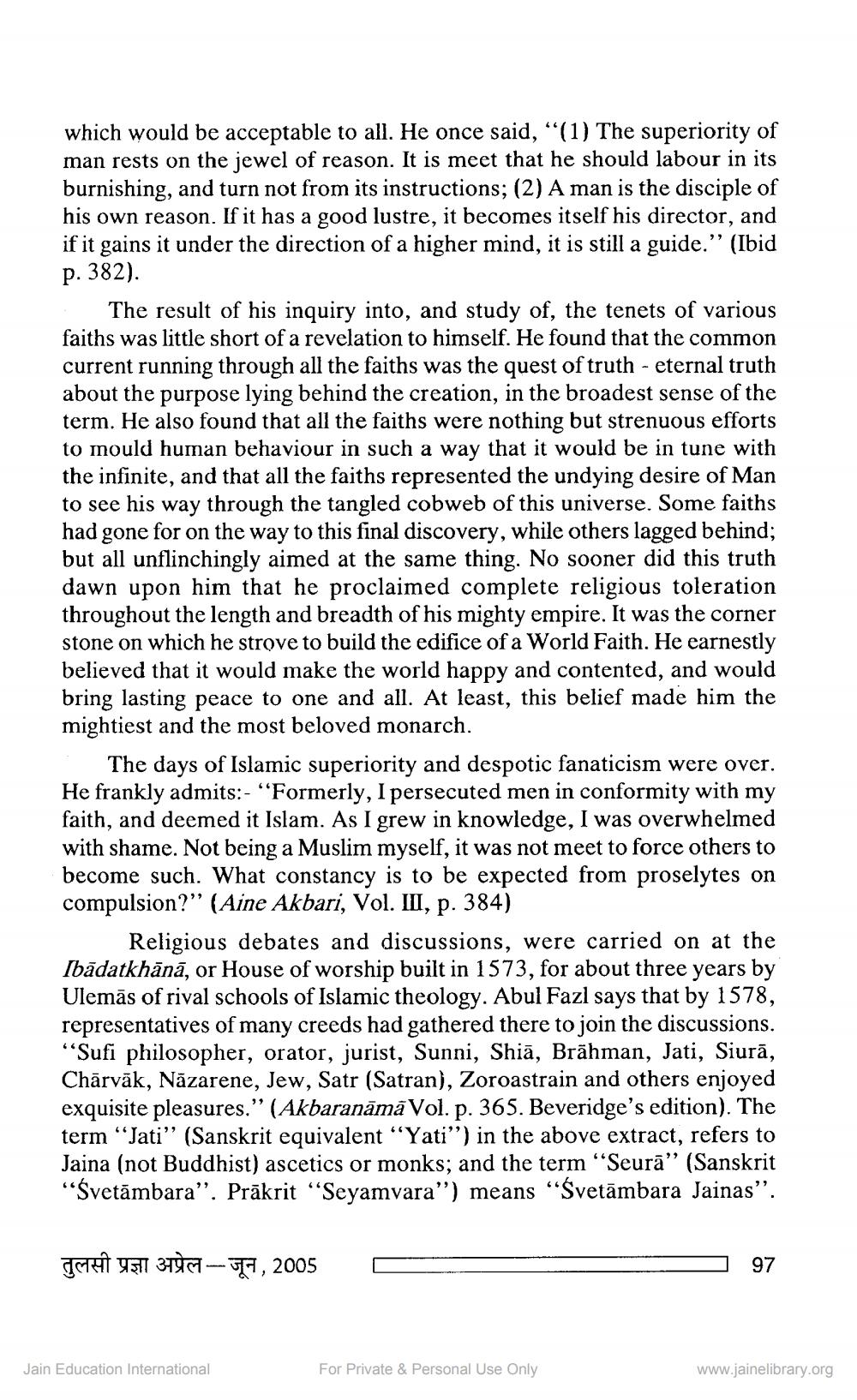________________
which would be acceptable to all. He once said, “(1) The superiority of man rests on the jewel of reason. It is meet that he should labour in its burnishing, and turn not from its instructions; (2) A man is the disciple of his own reason. If it has a good lustre, it becomes itself his director, and if it gains it under the direction of a higher mind, it is still a guide.” (Ibid p. 382).
The result of his inquiry into, and study of, the tenets of various faiths was little short of a revelation to himself. He found that the common current running through all the faiths was the quest of truth - eternal truth about the purpose lying behind the creation, in the broadest sense of the term. He also found that all the faiths were nothing but strenuous efforts to mould human behaviour in such a way that it would be in tune with the infinite, and that all the faiths represented the undying desire of Man to see his way through the tangled cobweb of this universe. Some faiths had gone for on the way to this final discovery, while others lagged behind; but all unflinchingly aimed at the same thing. No sooner did this truth dawn upon him that he proclaimed complete religious toleration throughout the length and breadth of his mighty empire. It was the corner stone on which he strove to build the edifice of a World Faith. He earnestly believed that it would make the world happy and contented, and would bring lasting peace to one and all. At least, this belief made him the mightiest and the most beloved monarch.
The days of Islamic superiority and despotic fanaticism were over. He frankly admits:- "Formerly, I persecuted men in conformity with my faith, and deemed it Islam. As I grew in knowledge, I was overwhelmed with shame. Not being a Muslim myself, it was not meet to force others to become such. What constancy is to be expected from proselytes on compulsion?'' (Aine Akbari, Vol. III, p. 384)
Religious debates and discussions, were carried on at the Ibādatkhānā, or House of worship built in 1573, for about three years by Ulemās of rival schools of Islamic theology. Abul Fazl says that by 1578, representatives of many creeds had gathered there to join the discussions. “Sufi philosopher, orator, jurist, Sunni, Shiā, Brāhman, Jati, Siurā, Chārvāk, Nāzarene, Jew, Satr (Satran), Zoroastrain and others enjoyed exquisite pleasures." (Akbaranāmă Vol. p. 365. Beveridge's edition). The term “Jati” (Sanskrit equivalent “Yati") in the above extract, refers to Jaina (not Buddhist) ascetics or monks; and the term "Seurā” (Sanskrit “Svetāmbara". Prākrit “Seyamvara") means “Svetāmbara Jainas”.
JAU 4541 3101 - 07, 2005
Jain Education International
For Private & Personal Use Only
www.jainelibrary.org




